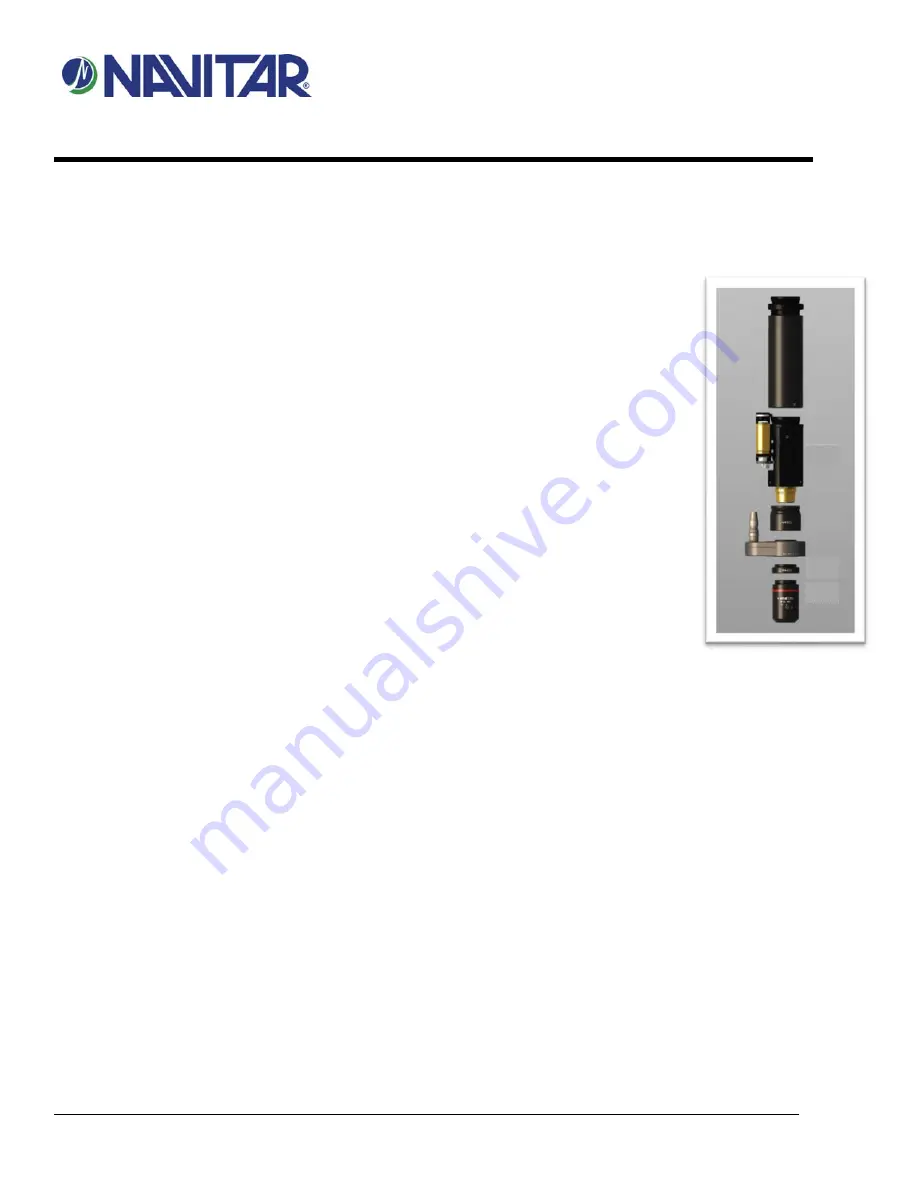
Optotune 6X System
Setup Guide
Created By: John Dong
Rev A
Reviewed By:
Date: 9/6/2019
Page 1 of 7
This document contains information proprietary and confidential to Navitar, Inc. Any disclosure, use or duplication of this document or any of the information contained
therein for other than the specific purpose for which it was disclosed is expressly prohibited except as Navitar, Inc. may otherwise agree to in writing.
1.0
MECHANICAL SETUP
1.
Steps to follow to install and set up the Optotune 6X system on a stand. Refer to System Diagram.
2.
1.
Install choice of Adapter Tube (typically 1‐6015 or 1‐6218) to stand.
2.
Attach 6X Sub‐assembly with no lower interface, (ex. 1‐63842, 1‐63843, 1‐64467, 1‐
63845), or the P.E. Ultra (1‐61517), and secure with 3X set screws in adapter.
3.
Insert Adapter 1‐64800 or 1‐64801 depending on whether using the 6X Sub or P.E.
Ultra, respectively, dove‐tail side first, into the bottom of the 6X Sub‐assembly, and
secure with 3X set screws in the 6X sub‐assembly.
4.
Thread the Optotune Lens (1‐64794) into the bottom of the Adapter, coax‐port facing
upwards.
a.
Note that the Optotune Lens can continue to rotate even after fully threaded,
this is normal and used for adjustment of the Optotune’s orientation.
5.
Thread either the 1‐64795 Coax Interface, or the 1‐64802 Adapter depending on
whether you want to use coax lighting.
6.
Refer to System Diagram to install your choice of objective lenses.
7.
Thread PixeLINK Camera to Adapter Tube and connect to PC using PixeLINK USB cable
(ideally a USB3 port).
2.0
SOFTWARE SETUP
Steps for first time software setup to install Optotune Lens Driver firmware and Optotune Control Application.
2.1
O
PTOTUNE
L
ENS
D
RIVER
F
IRMWARE
I
NSTALLATION
1.
Within the software package files, navigate to “Optotune Lens Driver ‐> Optotune Lens Driver Controller”.
2.
Run Setup.exe and follow the prompts.
3.
Plug the Optotune Lens Driver 4i (1‐40372) into a USB port (USB2 or USB3),
do not have it plugged into the
Optotune Lens yet
.
4.
Open your Device Manager and locate the Lens Driver in the “Ports” section.
5.
Right click the Lens Driver and select “Update Driver”.
6.
Select “Browse my computer for driver software”, then navigate to the installed location of the Optotune
Firmware, by default it’s “C:\Program Files (x86)\Optotune Switzerland AG\Lens Driver
Controller\Resources\Driver”, click next and follow the prompts.
7.
Once done, you can connect the Optotune Lens and the Lens Driver using the Hirose Cable (1‐40370 or 1‐
40371).
2.2
N
AVITAR
D
EVICE
C
ONTROL
A
PPLICATION
I
NSTALLATION
1.
Run Setup.exe within the top‐level software package folder and follow the prompts.
1
2
3
4
6
5







